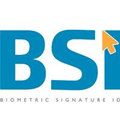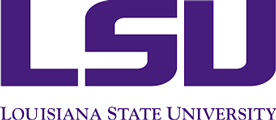The Ultimate Guide to Protecting Yourself From Disinformation i.e. Dezinformatsiya, Malinformation & Fake News
Information is Power as they say. Information refers to data that has been processed, organized, or structured in a way that makes it meaningful and useful. It can be understood as knowledge communicated or received concerning a particular fact or circumstance. “Fact” being the operative word. Information has historically been treated as Fact. However “Disinformation” is even more powerful because its entire purpose is to skew facts and twist information to manipulate and influence.

Disinformation refers to false information that is deliberately spread with the intent to deceive and manipulate public perception. It is often used strategically to achieve political, military, or commercial objectives. Disinformation campaigns may employ a variety of tactics, including the dissemination of fake news, conspiracy theories, and manipulated media, all designed to obscure the truth and influence public opinion.
Historical Context of Disinformation i.e Russian Dezinformatsiya
The term “dezinformatsiya” (дезинформация in Russian) has an interesting origin rooted in Soviet history.
The term “disinformation” gained prominence during the Cold War, particularly associated with Soviet tactics aimed at undermining adversaries through strategic deception. Its usage has expanded in modern contexts, particularly with the rise of digital communication technologies that facilitate rapid dissemination of false narratives.
- Soviet Creation: The term “dezinformatsiya” was coined by Joseph Stalin in 1923. Stalin created this word as the name for a KGB black propaganda department.
- Intended French Sound: Stalin deliberately gave the department what he thought was a French-sounding name. His intention was to claim that the term had Western origins, rather than being a Soviet creation.
- Early Definition: In the Soviet context, “dezinformatsiya” was defined as the “dissemination (in the press, on the radio, etc.) of false reports intended to mislead public opinion”.
- English Adoption: The English word “disinformation” is considered a calque (loan translation) of the Russian “dezinformatsiya”. It began appearing in English dictionaries in the 1980s, specifically entering Webster’s New College Dictionary and the American Heritage Dictionary in 1985.
- Broader Usage: As the term became more widely known in the 1980s, English speakers broadened its definition to include any government communication containing intentionally false and misleading material, often combined with true information, aimed at misleading elites or mass audiences.
- Contemporary Understanding: Today, “disinformation” is generally understood as false information deliberately spread to deceive people, often for political, military, or commercial purposes.
It’s worth noting that while the term gained prominence through its Soviet usage, the concept of deliberately spreading false information for strategic purposes has a much longer history in various cultures and political systems.
Key Characteristics of Disinformation
Intentionality: Unlike misinformation, which can be spread unintentionally, disinformation is characterized by its deliberate nature. The primary goal is to mislead and create confusion among the audience.
Manipulative Techniques: Disinformation often involves the use of rhetorical strategies that blend falsehoods with truths or half-truths. This approach exploits cultural and social divides, amplifying existing tensions to achieve desired outcomes.
Medium of Spread: Disinformation frequently spreads through social media platforms, where it can reach vast audiences rapidly. This has raised significant concerns about its impact on public trust in reliable information sources.
Distinction from Related Terms
Disinformation is often confused with other terms such as misinformation and malinformation:
Misinformation: This refers to incorrect information shared without malicious intent. Individuals may unknowingly share false information believing it to be true.
Mal-information: This involves sharing accurate information with the intent to cause harm, often by taking it out of context.
Government Involvement in Spreading Disinformation
Disinformation poses significant challenges for democratic societies, as it can erode public trust in institutions and media. It can lead to polarization and apathy among citizens, making it difficult for them to engage meaningfully in civic life. Addressing disinformation requires a multifaceted approach that includes enhancing media literacy and fostering critical thinking among the public.
Governments can play a significant role in both spreading and combating disinformation. Some governments actively engage in spreading disinformation for various strategic purposes:
Foreign Influence Operations: Countries like Russia and China have been accused of conducting disinformation campaigns to influence public opinion and political processes in other nations.
Domestic Control: Authoritarian regimes often use disinformation to maintain power, discredit opposition, and shape public narratives.
Military Tactics: Disinformation has been used as part of military strategy, with the CIA historically planting false stories in foreign media during conflicts.
Government Efforts to Combat Disinformation
Many governments are also taking steps to address the spread of disinformation:
Legislation: Some countries have passed laws aimed at curbing fake news and disinformation, though these efforts can be controversial due to potential impacts on free speech.
Media Literacy Programs: Governments like Finland have engaged with civil society to support media literacy efforts.
Fact-Checking Partnerships: Some governments have formed relationships with independent fact-checkers to combat false information.
International Cooperation: There are calls for like-minded countries to work together to tackle cross-border disinformation challenges.
Challenges and Considerations
Balancing Act: Governments must carefully balance combating disinformation with protecting freedom of expression.
Potential for Abuse: Laws ostensibly aimed at disinformation can be misused to silence legitimate dissent or criticism.
Comprehensive Approach Needed: Experts recommend governments adopt multi-faceted strategies that include improving public communication, enhancing media literacy, and addressing structural drivers of disinformation.
Collaboration: Effective responses often require cooperation between governments, media organizations, tech companies, and civil society.
Ultimately, while governments can play a crucial role in addressing disinformation, their efforts must be carefully designed to avoid unintended consequences and protect democratic values.
The main difference between disinformation and fake news lies in their scope and intent, though there is some overlap between the two concepts:
Disinformation:
- Is deliberately created and spread with the intent to deceive
- Has a broader scope, encompassing various forms of false or misleading information
- Is often part of strategic campaigns by actors like governments, corporations, or individuals
- Aims to achieve political, military, or commercial objectives
- Can employ sophisticated tactics and blend truths with falsehoods
Fake News:
- Is a more specific term, referring to false stories that appear to be news
- Often mimics the form of mainstream news articles
- Is typically sensational and emotionally charged
- Can be a subset of disinformation when created intentionally to mislead
- May sometimes be created as satire or parody without intent to deceive
Key distinctions:
- Intent: Disinformation is always intentional, while fake news may sometimes be unintentional (e.g., satire misunderstood as real news).
- Scope: Disinformation is a broader category that can include fake news, but also encompasses other forms of misleading information.
- Format: Fake news specifically imitates legitimate news articles, while disinformation can take many forms.
- Strategy: Disinformation often involves coordinated campaigns and sophisticated tactics, whereas fake news may be more isolated in its creation and spread.
It’s worth noting that the term “fake news” has become politically charged and is sometimes used to discredit legitimate news sources. For this reason, many scholars and experts prefer to use more precise terms like disinformation or misinformation when discussing false or misleading information.
To protect yourself from disinformation, you can employ several strategies:
Develop Critical Thinking Skills
- Question sources: Always evaluate the credibility of the information source. Consider the author’s expertise, the publication’s reputation, and potential biases.
- Analyze content: Ask critical questions about the media you consume, such as who created it, what techniques are used to attract attention, and what the purpose of the message is.
- Use the SIFT Method: Stop, Investigate, Find, and Trace information when reviewing for mis- or disinformation.
Improve Media Literacy
- Diversify news sources: Avoid relying on a single type of media. Use a variety of reputable sources to get a more comprehensive view.
- Understand different content types: Learn to distinguish between fact-based reporting, opinion pieces, and analysis articles.
- Be wary of social media: Recognize that platforms like Facebook and Instagram are often unreliable sources for quality news.
Verify Information
- Cross-check information: Use lateral verification by comparing information across multiple reputable sources.
- Use fact-checking websites: Consult reliable fact-checking sites like factcheck.org, snopes.com, or PolitiFact when in doubt.
- Double-check URLs: Be cautious of websites mimicking reputable news sources with slightly altered web addresses.
Practice Responsible Media Consumption
- Pause before sharing: Take a moment to verify information, especially if it provokes a strong emotional reaction.
- Be skeptical of “fake news” claims: Understand that this term is often misused and doesn’t simply refer to facts someone disagrees with.
- Look out for poor quality: Be wary of content with numerous spelling and grammatical errors, as it may indicate a lack of editorial standards.
Enhance Your Skills
- Learn about data literacy: Understand how statistics can be manipulated or misrepresented.
- Stay informed about current tactics: Keep up-to-date with evolving disinformation techniques, such as fabricated screenshots or deepfakes.
- Engage in media creation: Creating content yourself can provide valuable insights into how messages are crafted, fostering a more critical approach to media consumption.
By implementing these strategies, you can significantly improve your ability to identify and protect yourself from disinformation, ensuring that you’re better equipped to navigate today’s complex information landscape.
Robert Siciliano CSP, CSI, CITRMS is a security expert and private investigator with 30+ years experience, #1 Best Selling Amazon author of 5 books, and the architect of the CSI Protection certification; a Cyber Social Identity and Personal Protection security awareness training program. He is a frequent speaker and media commentator, and CEO of Safr.Me and Head Trainer at ProtectNowLLC.com.

 There has been a lot of talk about fake news since the 2016 presidential election, and a lot of controversy from those who spread fake stories for the purpose of influencing hearts and minds and of course the outcome of the election. This is dangerous for dozens of reasons, many of which threaten our democracy and in many cases can lead to people getting killed which has happened many times this year.
There has been a lot of talk about fake news since the 2016 presidential election, and a lot of controversy from those who spread fake stories for the purpose of influencing hearts and minds and of course the outcome of the election. This is dangerous for dozens of reasons, many of which threaten our democracy and in many cases can lead to people getting killed which has happened many times this year. All of us have been fooled by fake news, and it doesn’t seem to be going anywhere, anytime soon. But, there are some lessons that we can learn from it: Here are five of those lessons:
All of us have been fooled by fake news, and it doesn’t seem to be going anywhere, anytime soon. But, there are some lessons that we can learn from it: Here are five of those lessons:
























